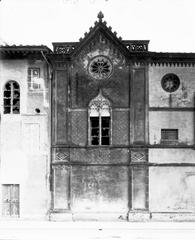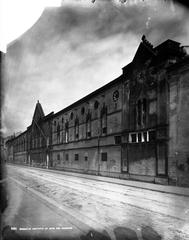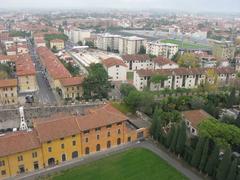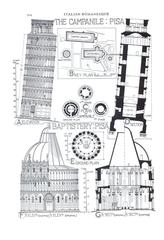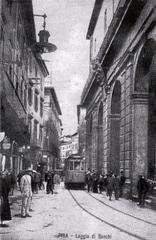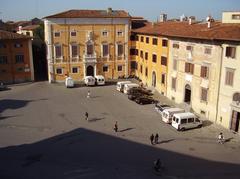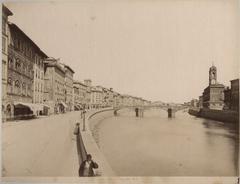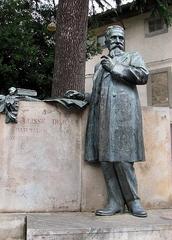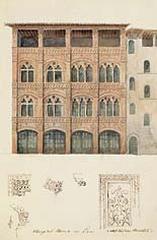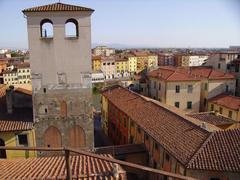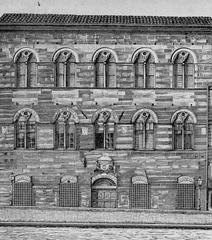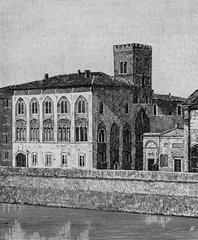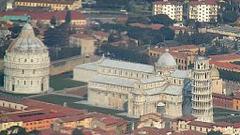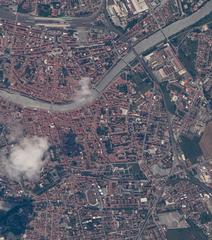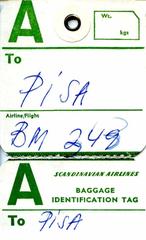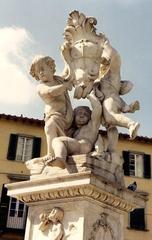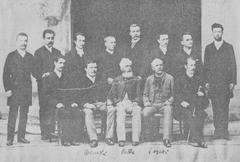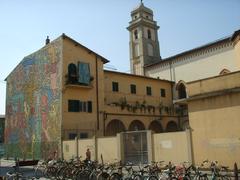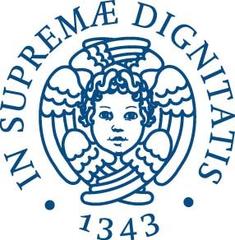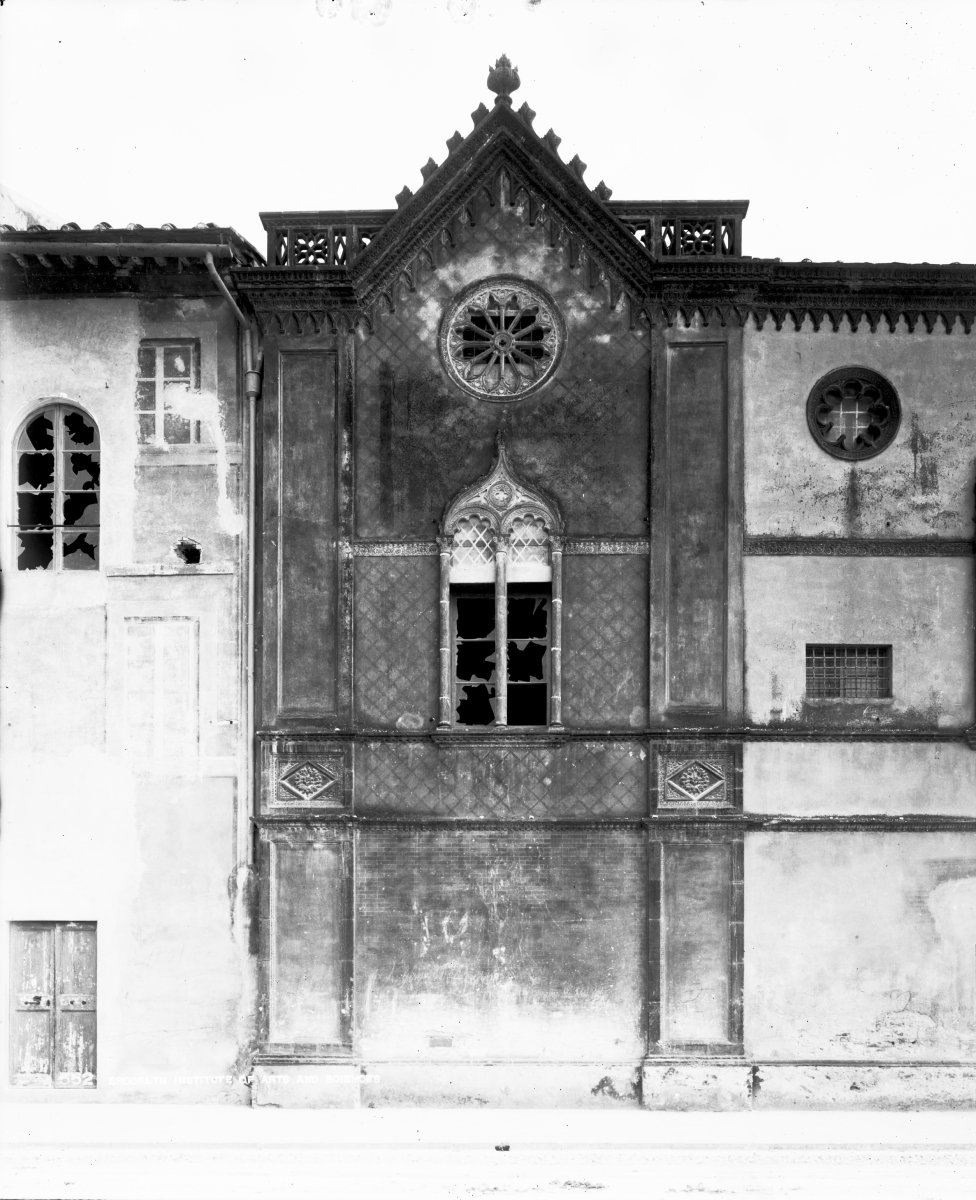
Ex Monastero delle Benedettine Pisa, Italy: Visiting Hours, Tickets, and Historical Guide
Date: 14/06/2025
Introduction
The Ex Monastero delle Benedettine, situated on Pisa’s southern Arno riverbank, is an exceptional testament to the city’s religious, architectural, and cultural evolution. Founded in the 14th century by Benedictine nuns, the monastery’s storied walls have witnessed centuries of devotion, artistic innovation, and societal transformation. Today, it thrives as a vibrant cultural center under the stewardship of the University of Pisa, offering visitors a peaceful retreat, a window into the past, and a hub for contemporary events. This comprehensive guide details the monastery’s origins, architectural development, practical visitor information, and travel tips to help you plan an enriching visit to this historical site (Comune di Pisa, Università di Pisa, turismo.pisa.it).
Historical Overview
Foundation and Medieval Growth
The monastery’s roots trace back to around 1330, when Benedictine nuns established a community dedicated to Saints Benedict and Matthew. Initially modest, the complex expanded with support from Pisan nobility, becoming a cornerstone of religious life and education in medieval Pisa (Comune di Pisa). The architecture reflected the Benedictine principles of simplicity and contemplation, with plain stone structures and a single-nave church.
Renaissance and Baroque Enhancements
Significant renovations in the 16th and 17th centuries introduced Renaissance cloisters with elegant arches, Baroque altars, and intricate frescoes. The monastery’s façade and interiors were updated to reflect the artistic currents of the period, blending classical symmetry with rich ornamentation (Regione Toscana). The addition of decorative stuccos, fresco cycles, and an ornate altar crafted by local artisans contributed to the site’s growing artistic importance.
Modern Transformations
After the Napoleonic suppression of religious orders, the complex was repurposed for secular uses, including education and charitable work. In the 20th century, the University of Pisa acquired the monastery, undertaking careful restoration to preserve its historical character while adapting it for academic and cultural purposes (Università di Pisa). Today, the site hosts exhibitions, conferences, and cultural events, retaining its legacy as a center for learning and community engagement.
Artistic and Cultural Significance
The Ex Monastero delle Benedettine was a hub for spiritual life, female education, and charity throughout the centuries. The nuns managed one of Pisa’s earliest girls’ schools and maintained a scriptorium for religious manuscripts (Pisa Cultura). Treasured artworks include 17th-century frescoes and the Baroque altar, some of which survive in the complex or local collections. The monastery’s resilience through periods of reform, war, and secularization reflects the enduring influence of women’s religious communities in Pisa.
Architectural Highlights
Medieval Foundations and Cloisters
The original monastery was built on what was once a medieval industrial area, evidenced by archaeological finds of brick and pottery kilns (turismo.pisa.it). The 14th-century cloisters, with their arcaded walkways and peaceful gardens, remain a highlight for visitors seeking tranquility and insight into monastic daily life.
Façade and Bell Tower
Austere yet striking, the 17th-century façade faces Piazza San Paolo a Ripa d’Arno, complemented by a square bell tower topped with a pyramidal roof (terredipisa.it). In the 19th century, architect Domenico Santini redesigned the riverside façade in neo-Gothic style, featuring ochre hues and pointed Gothic windows, a rare feature in Pisa (lakinzica.it).
Interior Treasures
While much of the interior has been adapted for modern use, visitors can still appreciate fragments of 15th-century frescoes, including scenes from the life of St. Benedict by Benozzo Gozzoli (now preserved offsite). The complex today features multi-purpose halls, study spaces, and event venues (terredipisa.it).
Visitor Information
Location and Access
The Ex Monastero delle Benedettine is located at Piazza S. Paolo a Ripa d’Arno, 16, easily reached on foot, by bicycle, or by public transport. It is about a 15-minute walk from Pisa Centrale train station (Google Maps). Bus lines 2, 4, and 21 serve the area, while parking nearby is limited.
Opening Hours
- General Opening: 9:00 AM – 6:00 PM, Monday to Saturday. Hours may change for special events or academic functions (Università di Pisa).
- Guided Tours: Available by appointment, lasting 60–90 minutes, and can be booked in Italian or English.
Tickets
- Exhibitions: Free or nominal fee (€3–€5) for most public events.
- Guided Tours: €8–€12 per person; advance booking recommended, especially during peak seasons or festivals.
- Special Offers: Discounts for students, seniors, and group visits.
Accessibility
The complex has been renovated for accessibility, with ramps and elevators in most public areas. Some historic sections remain less accessible; visitors with mobility needs are encouraged to contact the site in advance for assistance.
What to See and Do
- The Cloister: A peaceful, arcaded courtyard ideal for reflection and photography.
- Frescoes and Stucco: Surviving decorative details in the corridors and refectory.
- Church of San Paolo a Ripa d’Arno: Adjacent to the monastery, this Romanesque church features a marble façade and is often included in guided tours (Chiesa di San Paolo a Ripa d’Arno).
- Cultural Events: Concerts, art exhibitions, and conferences, including the annual “Benedettine in Musica” festival.
- Study and Relaxation: Cloister gardens and study rooms offer a serene environment for visitors.
Travel Tips
- Dress Code: Modest attire is recommended, especially when entering the adjacent church.
- Photography: Permitted in most areas; avoid flash and tripods during events.
- Best Time to Visit: Weekday mornings are quietest; special events may require advance booking.
- Nearby Amenities: Numerous cafés and restaurants are within a five-minute walk. The Arno riverside promenade is perfect for a scenic stroll.
Frequently Asked Questions (FAQ)
Q: What are the opening hours?
A: 9:00 AM to 6:00 PM, Monday through Saturday. Check for updates during special events.
Q: How do I book guided tour tickets?
A: Book through the University of Pisa’s cultural office or local tourism agencies; advance booking is recommended.
Q: Is the monastery accessible for those with mobility challenges?
A: Yes, most areas have ramps/elevators, but some historic sections may be less accessible.
Q: Are children welcome?
A: Yes, the site is family-friendly, with educational workshops for children during select events.
Q: Are photos allowed?
A: Yes, except in restricted zones or during certain exhibitions.
Sustainability and Responsible Tourism
The Ex Monastero delle Benedettine prioritizes sustainability, employing energy-efficient lighting and waste reduction measures. Visitors are encouraged to respect the site, dispose of litter responsibly, and support local businesses (Pisa Cultura).
Booking and Contact Information
- Official Website and Updates: Ex Monastero Delle Benedettine – Università di Pisa
- Contact: [email protected] | +39 050 221 2000
Health and Safety Guidelines
As of June 2025, masks are optional but recommended in crowded indoor spaces. Hand sanitizer stations are available throughout the complex. Visitor numbers may be limited during peak times; check for updated health protocols before visiting (Ministero della Salute).
Nearby Attractions
- Leaning Tower of Pisa & Piazza dei Miracoli: 1.5 km away.
- Museo Nazionale di San Matteo: 800 meters away (Museo Nazionale di San Matteo).
- Chiesa di San Paolo a Ripa d’Arno: Adjacent to the monastery.
- Arno River Promenade: Ideal for a riverside walk.
Plan Your Visit
For the latest visiting hours, tickets, exhibitions, and special events, consult the official website or follow the University of Pisa’s cultural channels. Download the Audiala app for maps, audio guides, and up-to-date travel tips. Share your experiences with #BenedettinePisa and #PisaCultura.
Key Milestones
- 1330: Founding of the monastery by Benedictine nuns.
- 16th–17th centuries: Renaissance and Baroque renovations.
- 19th century: Neo-Gothic façade restoration.
- 20th century: University of Pisa stewardship and adaptive reuse.
Summary and Recommendations
The Ex Monastero delle Benedettine offers a unique blend of historical depth, architectural beauty, and contemporary culture. Its tranquil cloisters, artistic heritage, and dynamic event calendar make it a must-visit for travelers interested in Pisa’s layered history. For the most rewarding experience, check official sources for current information, book tours in advance, and take advantage of digital resources like the Audiala app (Università di Pisa, Pisa Turismo, Comune di Pisa).
Official Sources
- Comune di Pisa – Complesso delle Benedettine
- turismo.pisa.it – Ex Monastero delle Benedettine
- Benedettine Pisa Official Website
- Università di Pisa – Ex Monastero delle Benedettine
- Pisa Turismo Official Website
